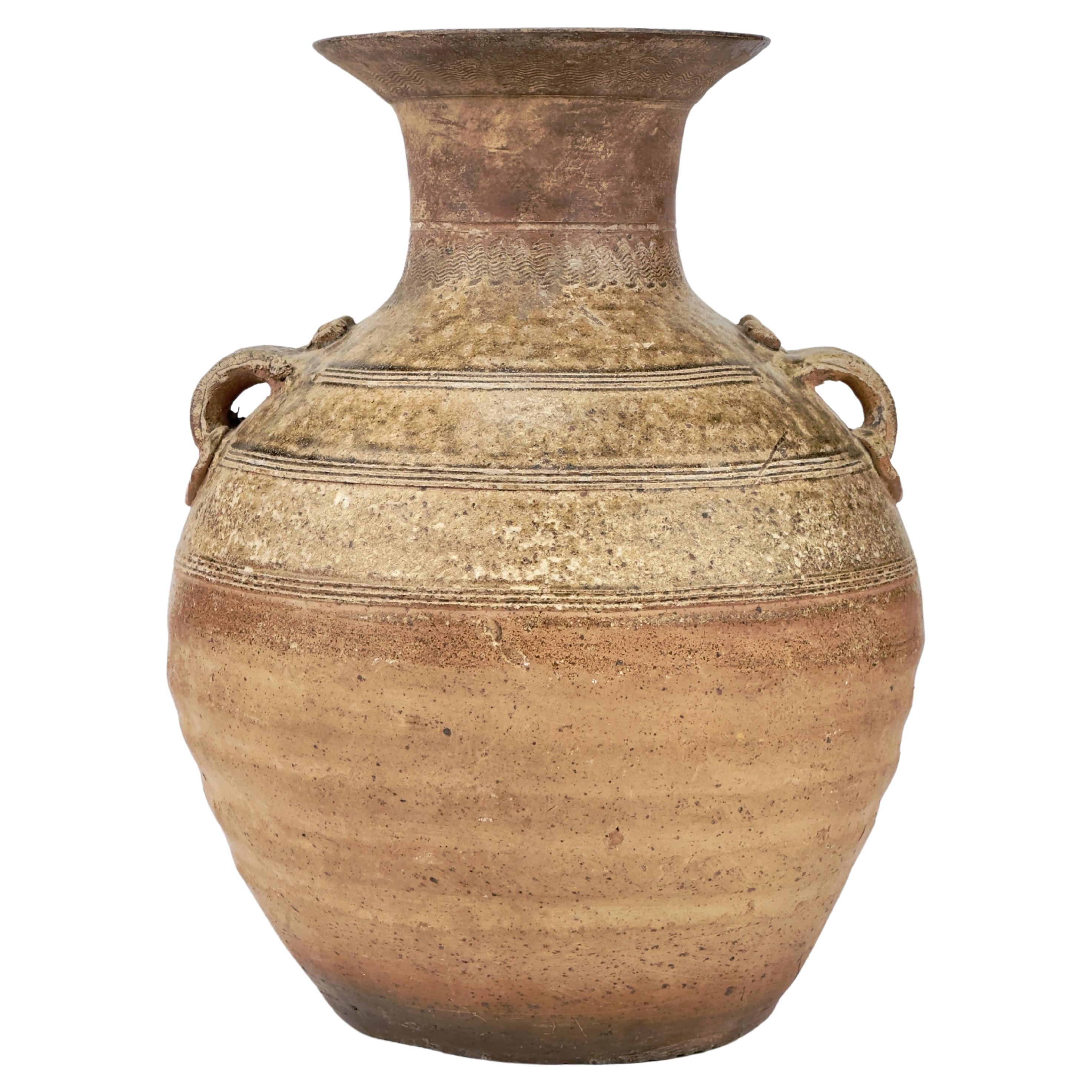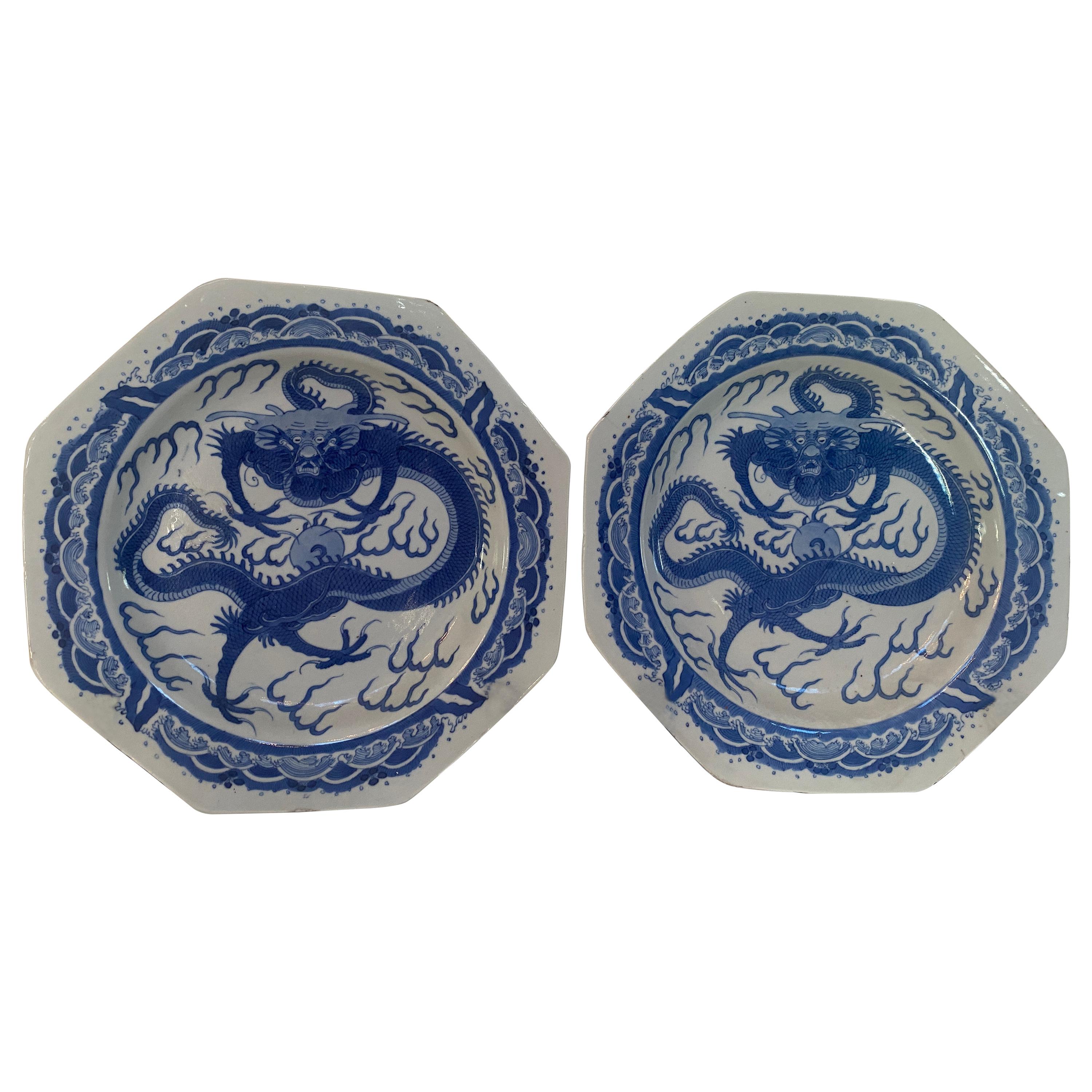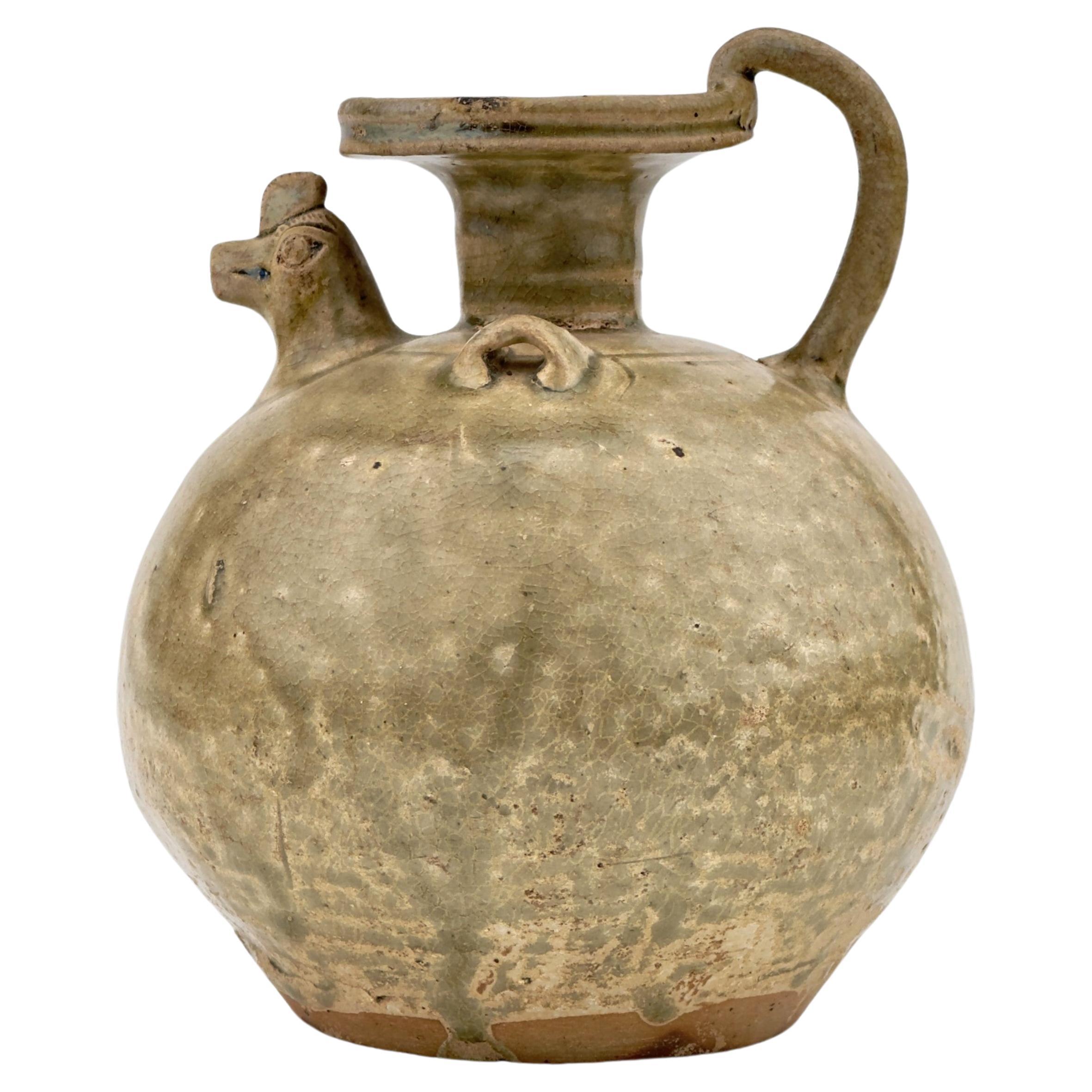Items Similar to Longquan Celadon 'Dragon' Jar and Cover, Song Dynasty(1127–1279)
Want more images or videos?
Request additional images or videos from the seller
Longquan Celadon 'Dragon' Jar and Cover, Song Dynasty(1127–1279)
About the Item
A similar jar with a cover, part of the Avery Brundage collection at the Asian Art Museum in San Francisco, is featured in Mary Tregear's "Song Ceramics" (London, 1982, plate 286). There's also a comparable jar and cover at the Indianapolis Museum of Art, part of the "Beauty and Tranquillity: the Eli Lilly Collection of Chinese Art" exhibition (1983, plate 78). Another jar of a similar dimension, featuring a domed cover topped with a bird figure, from Warren E. Cox's collection, was included in the "Chinese Ceramics in Chicago Collections" exhibition at the Mary and Leigh Block Museum of Art, Northwestern University, Evanston, Illinois (1982, page 35, catalog number 19).
These funerary jars are believed to have been produced in pairs, one depicting the 'Green Dragon' of the East and its counterpart showing the 'White Tiger' of the West. A notable pair from the Sir Percival David collection, now in the British Museum in London, is mentioned in Margaret Medley's "Illustrated Catalogue of Celadon Wares" (London, 1977, plate IV, number 36), where she suggests that these jars might have been used to hold fragrant oils.
Period : Song Dynasty
Type : Celadon
Medium : Longquan ware
Size : 23.0 cm(Height) 6.0cm(Diameter)
Provenance : Acquired in 1999, Hongkong
Reference :
1) LACMA - Lidded Funerary Urn (Hu) with Bird, Dogs, and Lotus Scrolls
(Type : Closely Related)
2) Sotheby's London 11 May 2022 - Important Chinese Art - Lot38
(Price : 44,100 GBP / Type : Related)
3) Hongkong 30 NOV 2016 - Important Chinese Ceramics and Works of Art - Lot 3389
(Price : HKD 625,000 / Type : Related)
4) Christies Newyork 22 AUG 2018 - Interiors - Lot192
(Price : 18,750 USD / Type : Related)
* Song Dynasty Longquan Celadon
Longquan celadon refers to a type of Chinese ceramic that was famous for its distinctive glaze and high-quality craftsmanship, primarily produced during the Song Dynasty (960~1279 AD). These ceramics were made in the Longquan region of the Zhejiang province in eastern China, an area rich in the clay and mineral resources necessary for ceramic production.
The most notable characteristic of Longquan celadon is its glaze, which ranges in color from a pale blue-green to a deep olive green. This unique color comes from the iron oxide in the glaze, which, when fired in a reducing kiln atmosphere, produces the green hue. The thickness of the glaze, as well as the firing conditions, could affect the final shade and appearance of the celadon, with some pieces exhibiting a more crackled texture and others a smoother, glossier finish.
Longquan celadons were highly prized for their beauty and durability, making them popular both domestically within China and internationally. They were exported widely, reaching as far as Southeast Asia, the Middle East, and Africa, where they were often considered luxury items and treasured by various cultures.
The designs of Longquan celadon wares varied from simple and elegant forms to more elaborate decorations, including carved or incised motifs inspired by nature, such as lotus flowers, phoenixes, dragons, and foliage. Despite the variations in decoration, the emphasis was always on the harmony between form, glaze, and decoration, with the glaze playing a crucial role in enhancing the overall aesthetic appeal of the piece.
During the Song Dynasty, Longquan celadon was one of several major types of ceramics produced in China, each with its own distinctive characteristics. However, the quality and beauty of Longquan celadon made it one of the era's most celebrated ceramic types, and it continues to be highly valued by collectors and scholars today.
About the Seller
New to 1stDibs
Joined in the past six months.
4.5
Vetted Seller
These experienced sellers undergo a comprehensive evaluation by our team of in-house experts.
Established in 1999
1stDibs seller since 2023
Typical response time: 1 hour
- ShippingRetrieving quote...Ships From: seoul, Korea South
- Return PolicyA return for this item may be initiated within 10 days of delivery.
Auctions on 1stDibs
Our timed auctions are an opportunity to bid on extraordinary design. We do not charge a Buyer's Premium and shipping is facilitated by 1stDibs and/or the seller. Plus, all auction purchases are covered by our comprehensive Buyer Protection. Learn More
More From This SellerView All
- Longquan Celadon Five-Spouted Jar, Northern Song Dynasty (AD 960~1127)Located in seoul, KRThickly potted with an ovoid body of five horizontal lobes tapering toward the top, carries both aesthetic and practical values. The jar is intricately carved with rows of upright lo...Category
Antique 15th Century and Earlier Chinese Ming Antiquities
MaterialsCeladon
- Carved 'Longquan' Celadon-glazed Funerary vase and cover, Song dynastyLocated in seoul, KRThe vase features a ribbed body, subtly enhancing its graceful contours, and is topped with a uniquely sculpted lid adorned with figurative elements. Period : Song Dynasty Type : Ce...Category
Antique 15th Century and Earlier Chinese Ming Antiquities
MaterialsCeladon
- A Longquan Celadon-Glazed 'Dragon' Dish, Yuan DynastyLocated in seoul, KRThe dish is decorated to the centre with a moulded appliqué dragon chasing the flaming pearl surrounded by a carved stylised foliage band at the cavetto. The moulded fluted exterior ...Category
Antique 15th Century and Earlier Chinese Ming Antiquities
MaterialsCeladon
- Small Celadon Chrysanthemum Dish, Northern Song Dynasty(AD 960~1127)Located in seoul, KRPotted with the fluted sides rising from a recessed base, carved to the interior with Chrysanthemum, covered overall with a grayish-green glaze, save for a ring to the underside left...Category
Antique 15th Century and Earlier Chinese Ming Antiquities
MaterialsCeladon
- A Rare Cream-Glazed Ewer and Cover, Northern Song Dynasty (960–1127)Located in seoul, KRThe octagonal lobed ovoid body rising from a short spreading foot to a tall trumpet neck, set at the shoulder with a tall curved spout and to the other side with a tall strap handle, the dished cover surmounted with a ruyi-shaped finial, covered overall in a creamy-white glaze. Compared to other similar types of Northern Song Dynasty ceramics, this piece is extremely elegant in shape. It most closely resembles the Qingbai porcelain in the collection of The Museum of Oriental Ceramics in Osaka. Period : Northern Song dynasty(960~1127) Type : Creamy-white glaze Ewer Provenance : Acquired in 1999, Hongkong Reference : THE MET Accession Number: 18.57.1 Sotheby's London 2018 - St George Street Sale Asian Art - Lot 208 * Song Dynasty Ding-Yao Ware Song Dynasty Ding Yao porcelain holds a significant place in Chinese ceramic art, specifically as a type of white porcelain produced during the Song Dynasty. Produced predominantly during the mid to late Song Dynasty, Ding Yao ceramics are renowned for their delicate and intricate features. Ding Yao ceramics were primarily crafted from clay rich in white minerals and fired at high temperatures to achieve a durable and lustrous surface. One distinctive characteristic of this serene white ceramic is the presence of silver or gold-colored splashes of glaze, often created using a mineral called galena. Galena, with its lustrous appearance, was suitable for creating fine patterns and intricate decorations. These ceramics frequently feature delicate carvings, floral motifs, or subtle decorations. While commonly used for utilitarian purposes such as tableware, Ding Yao porcelain also served as a medium for artistic expression, producing many artworks. The production of Ding Yao ceramics was relatively limited, and surviving pieces are considered rare and valuable art pieces...Category
Antique 15th Century and Earlier Chinese Ming Antiquities
MaterialsCeramic
- Rare Cream Glazed Ewer and Cover, Song Dynasty (960~1279)Located in seoul, KRThis is a Song Dynasty ceramic ewer, exhibiting the characteristic simplicity and elegance of the period. The ewer's form is sturdy with a full-bodied base that tapers gently to a na...Category
Antique 15th Century and Earlier Chinese Chinese Export Antiquities
MaterialsCeramic
You May Also Like
- Chinese Song Dynasty Green Glazed Buddhist Funerary Jar and Cover - TL TestedLocated in London, GBA vibrant Song Dynasty funerary urn that captures the short-lived, yet fruitful period of Song dynasty artistic production. The body is globular ...Category
Antique 15th Century and Earlier Antiquities
MaterialsTerracotta
- Ming Dynasty Longquan Celadon Glazed ChargerLocated in Stamford, CTLongquan celadon glazed charger having fluted rim with well centre and incised stylized decoration. Ming dynasty. Underside with burnt orange firing m...Category
Antique 16th Century Chinese Ming Ceramics
MaterialsCeramic
- Han Dynasty Green Glazed Covered Storage JarLocated in Austin, TXA wonderful Han Dyansty (206 BC-200 AD) storage vessel. The circular body set upon three legs and fitted with a lid. The entirety covered in heavy leaded green glaze, imitating bronz...Category
Antique 15th Century and Earlier Chinese Han Antiquities
MaterialsPottery
- Song Dynasty, A Pair of Antique Chinese Porcelain Vases with Dragon and GodsLocated in Sampantawong, THA pair of Song Dynasty porcelain olive green vases decorated with gods around the vase and flying dragon on top of each vase. Each lid decorat...Category
Antique 15th Century and Earlier Chinese Antiquities
MaterialsStoneware
- Song Dynasty, A Pair of Antique Chinese Porcelain Vases with Dragon and GodsLocated in Sampantawong, THA pair of Song Dynasty porcelain olive green vases decorated with gods around the vase and flying dragon on top of each vase. Each lid decorated...Category
Antique 15th Century and Earlier Chinese Antiquities
MaterialsStoneware
- A Chinese Longquan Celadon Lotus Bowl, Ming DynastyLocated in ARMADALE, VICA Chinese Longquan Celadon Lotus Bowl, Ming Dynasty Diameter: 16.7 cm Height: 5.5 cm Provenance: The Collection of Dr. John Yu AC Dr. Yu was the Foundi...Category
Antique 15th Century and Earlier Chinese Ming Ceramics
MaterialsCeramic
Recently Viewed
View AllMore Ways To Browse
Chinese Blue And White Jar With Dragon
Yue Celadon
Large Wall Pieces
Chests For The Living Room
Vintage 90
Midcentury Modern Ceramic Table Lamp
Entry Surround
Glass Floor Lamp Italian Glass
1950s Side Table Table
Antique Pendant Antique Pendant Light
Up Up Coffee Table
New England Style Furniture
Couches Mid Century Designer
Liberty A
Table Top Cases
Branching Lighting
Similar Items
Finnish Design Chair





